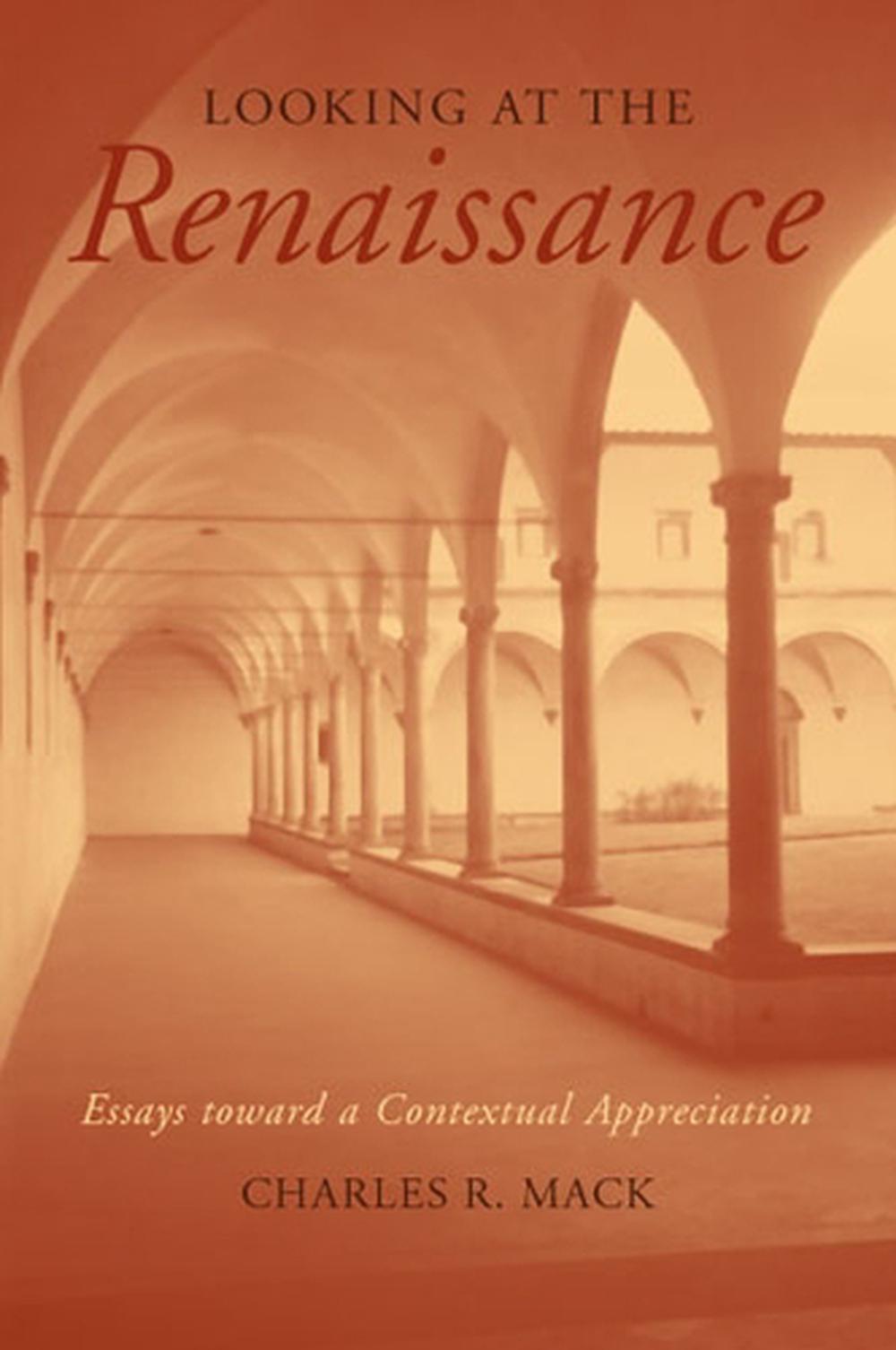
Looking at the Renaissance
by Charles R. Mack
A well-illustrated and fast paced volume that examines the evolving context of Renaissance art while offering fresh insight into the meaning of the Renaissance
Paperback
English
Brand New
Publisher Description
"Not only is this a well-written book, it is an unusually valuable contribution to the field of Renaissance Studies."
---Norman Land, University of Missouri Utilizing a variety of examples from the artistic production of medieval and Renaissance Europe, Looking at the Renaissance presents a holistic interpretation of the origins and characteristics of the threshold period to our modern age. Charles R. Mack illustrates the Middle Ages as a time of fragmentation in which the world was comprehended in piecemeal fashion. However, he states that the Renaissance advanced a unified idea made possible by the resurrection of a melioristic vision of man's role within a Divine Plan. Looking at the Renaissance argues in favor of the now-disputed notion of "historical periods" while continuing to uphold the importance of the antique revival in shaping the cultural character of the age. Mack offers a new contextual approach to appreciating not only the art but also the cultural entirety of the Renaissance period. By suggesting certain key ingredients common to all Renaissance creations and activities, Mack facilitates a better understanding of the revolutionary character of the era. As a compact, yet broadly considered treatment of the era, Looking at the Renaissance would be an extraordinary addition to the library of both scholars and students studying classics, art, culture, literature, and history.
Author Biography
Charles R. Mack is Professor of Art History at the University of South Carolina.
Table of Contents
List of Illustrations; Introduction; Methodological approaches--problems in determining the nature of the Renaissances--unity central to Renaissance--medieval elements and Renaissance innovations--Bernward's Doors contrasted with Masaccio's Expulsion of Adam and Eve--spiritual continuum--questions posed. Chapter 1. When and Where; Periodization dispute and argument in favor of a Renaissance--time frame and personalities--Renaissance as Italian contribution--rediscovery of antiquity--chauvinistic stimulus--preeminence of Florence over Rome and Siena--testimony of Alberti, Salutati, Bruni, and Ghirlandaio. Chapter 2. Virtual Reality; Columbus's voyages as reflection of Renaissance unity--breakup of antiquity and medieval fragmentation--impact of Crusades--contrast between Leonardo's Last Supper and Pisa Cross 15--impact of St. Francis--trecento mysticism and participatory faith--altarpieces and narrative composition--double-entry bookkeeping symbolic of change--Giotto's Crucifixion and that of Masaccio compared--Berlinghieri's St. Francis Altarpiece--Roger Bacon--Misericordia view of Florence and that of 1490 as example of spatial evolution--proto-Renaissance seen in Nicola Pisano and Capuan sculptures--Ghiberti's Baptistery Doors and Masaccio's Tribute Money--Bruni's harmonic state--polyptych compartments and compositional unity--Toscanelli and Brunelleschi's golden section at the Innocenti; atmosphere and rendition of space. Chapter 3. Means to the End; Medieval transitions--nature of humanism--the antique revival and Greek emigres--variety and uniformity--philosophic and theological fusions--bibliophiles and antiquarians--the modo antico--Brunelleschian harmony and Albertian classicism--Pius II and his views on the Renaissance--signs of self-awareness and cultural synthesis--worldly justification--architectural demonstrations--harmony and geometry--microcosm and macrocosm--artist as creative model--Albertian congruity--Leonardo's Vitruvian Man--Pico and Shakespeare--the earthly module, poetry and painting. Chapter 4. Manifest Miracle; The artist as interpreter of divine law--Alberti and the role of creativity--medieval attitudes and Renaissance rediscovery--Etruscan tombs--antiquarianism and papal directives--Pius II and the new order--Salutati and Brunelleschian rediscoveries--Donatello and dichotomy--recognition of the past and Botticelli's re-creations--Niccolo Niccoli and Nicholas V--mathematics and geometry--perspective and space--Piero della Francesca and Columbus. Chapter 5. Space Transcended; Spatial release and illusionary creations--religious reality and Bridget of Sweden--cloisters and visions--Leonardo's Last Supper revisited--family names and tax declarations--the time factor-modal polyphony and Luca della Robbia--Copernicus and Gutenberg--vista viewing and gridden ordering--Uccello and Leonardo: views from space--Verrocchio and gestural unity--Altdorfer and the Renaissance expanse. Chapter 6. Epilogue; Transalpine variations and points of intersection--Foquet as precursor--Durer as the link--Erasmus and Gutenberg--Hamlet's doubt and mannerist deviation--Veronese and form versus content--Michelangelo's David/Apollo--Giambologna as unifier and destroyer. Notes; Selected Bibliography; Index; Plates
Details

